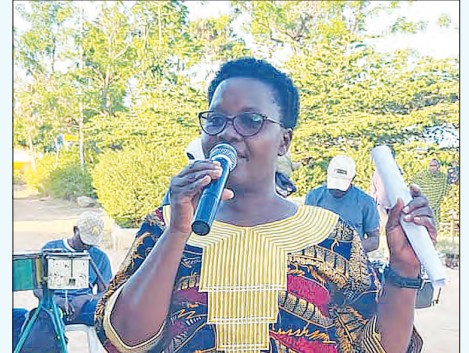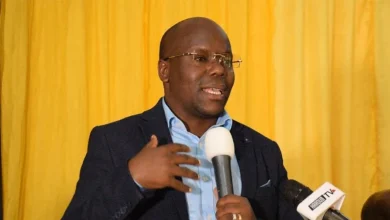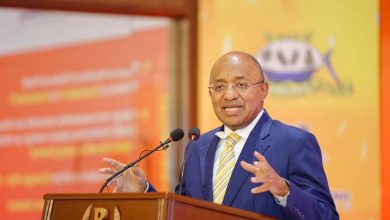Tanzania’s golden promise: Parties outline visions for mining-led prosperity

THE future of Tanzania’s mining industry-particularly gold-has once again taken centre stage in the country’s political debates.
Across the campaign trail, political parties are outlining their visions for managing the nation’s mineral wealth, promising citizens that the glitter of gold will translate into jobs, infrastructure and inclusive prosperity.
The incoming administration, regardless of political alignment, will inherit a sector that has been fundamentally reshaped since 2019. Reforms such as the renegotiation of mining contracts, increased state equity participation and stricter export oversight have redefined Tanzania’s resource governance landscape.
The CCM, for instance, promises to ensure that every Tanzanian benefits directly from mineral wealth by strengthening community development agreements between mining companies and local authorities.
The party also plans to accelerate value-addition projects, including completion of the Mwanza gold refinery, to stop the export of raw minerals and create more skilled jobs at home.
Opposition parties, while acknowledging progress, argue that communities hosting large-scale mines deserve a bigger share of the benefits. Gold remains Tanzania’s top foreign-exchange earner, bringing in more than 2.7 billion US dollars annually.
It is an undeniable fact that leading gold producers, including Geita, North Mara and Bulyanhulu, remain central to production. Simultaneously, increased exploration activities in areas such as Shinyanga, Tabora and Mbeya demonstrate a commitment to longterm sustainability.
The significance of gold exports—perennially ranking among Tanzania’s foremost export commodities, although not many are aware of it has fortified the Tanzanian shilling, enhanced Tanzanian reserves and provided a buffer for the economy against external disturbances, particularly amid global price volatility.
As Tanzanians have numerous reasons to praise Dr Samia Suluhu Hassan for her skillful leadership of the nation, creating an environment that builds confidence among investors. This ongoing improvement of the business environment has not only increased trust but has also elevated Tanzania’s position globally in gold production and trade.
The incoming administration is expected to address the gold sector that has undergone significant changes since 2019, particularly through renegotiation of mining contracts, increased state equity participation and stricter export oversight.
While some may think otherwise, the implementation of these measures has enhanced transparency and ensured that a greater portion of mineral wealth benefits and will continue to benefit Tanzanians through royalties, taxes and local content initiatives.
The local content initiatives feature well in the envisaged DV2050 and the longterm plan perspective. The continuation of this positive trend relies on maintaining investor confidence, streamlining licensing procedures and addressing issues such as illegal mining and environmental damage.
ALSO READ: Leaders, analysts rally youth for peace
The ongoing expansion of ASM operations, supported by access to financial resources, technological progress and market opportunities, will be crucial for fostering inclusive growth within the sector.
The production of gold is crucial to Tanzania’s broader industrialisation and fiscal plans, especially as the new government, to be sworn in at the close of the year, will aim to expand the value addition of the manufacturing sector and diversify its export base.
Given the rising global gold prices, revenue from gold will be a crucial source of funding for infrastructure, energy and social projects as part of the new administration’s development strategy, which perfectly aligned with the broader vision of DV2050 and FYDPVI.
Aligning the mining industry with value-added processes, such as refining and jewellery production, has the potential to increase employment opportunities and strengthen links with other sectors significantly.
With proper management, the steady rise in gold production will not only support macroeconomic stability but also help Tanzania achieve upper-middle-income status by 2030 and beyond, transforming mineral wealth into lasting national prosperity.
To those who might not be aware of how significantly gold contributes to a nation’s economy, globally gold futures rose above 4,000 US dollars per troy ounce for the first time, probably in recent history, driven by a rising desire among investors to place their money in a stable asset amidst the ongoing US measures, including various trade-related concerns.
As of Tuesday last week, the prevailing price for New York spot gold had previously closed at 3,960.60 US dollars per troy ounce, the benchmark for assessing precious metals on Monday. For individuals unaware of the implications, gold sales may see a notable rise as cautious investors turn to stable investment options for their capital.
Indeed, those involved in trading these commodities would agree that other metals, such as silver, have experienced substantial gains over the past year, mainly due to President Donald Trump’s series of tariffs, which have introduced a level of uncertainty regarding the global economic outlook.
And, recently, the possibility of lower interest rates has made gold a more attractive investment compared to interest-bearing assets.
The gold futures have risen by about 50 per cent since the start of 2025, with trading figures reaching approximately 4,003 US dollars per troy ounce shortly after 4 pm on Tuesday of the previous week. This marks an increase from around 2,670 US dollars at the beginning of January.
Silver, too, has experienced a more significant percentage increase thus far this year. On Tuesday afternoon, silver futures have experienced a remarkable growth of nearly 60 per cent, currently trading at just under 48 US dollars per troy ounce.
Considering recent developments, one might think about the reasons behind the rising prices and how a nation such as Tanzania, endowed with substantial gold deposits and active mining operations, could benefit from these fluctuations in market prices. Simply put, much of it ultimately relates to uncertainty.
The tendency to acquire precious metals like gold often increases during periods of investor worry. It is undeniable that a large part of the recent economic upheaval can be traced back to Trump’s trade wars.
Starting in 2025, the new tariffs implemented by the president on imported goods have exerted substantial pressure on both businesses and consumers, leading to higher costs and a decline in the job market.
Consequently, hiring has significantly decreased, while inflation is gradually increasing. An increasing number of consumers globally are voicing pessimism about the outlook because of the interlink across nations.
The robust performance of the country’s gold exports is poised to augment foreign exchange reserves, fortify the shilling and improve its ability to manage dollar-denominated debt, all while alleviating potential strain on the national budget.
Increased gold revenues will facilitate greater fiscal flexibility for domestic investment, diminish dependence on external borrowing and enhance the nation’s overall balance of payments status.
The advantageous relationship between gold and the dollar offers Tanzania a financial buffer and strategic advantage, enabling the country to stabilise its economy, uphold creditworthiness and foster growth as the new administration assumes power.





